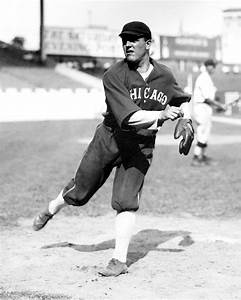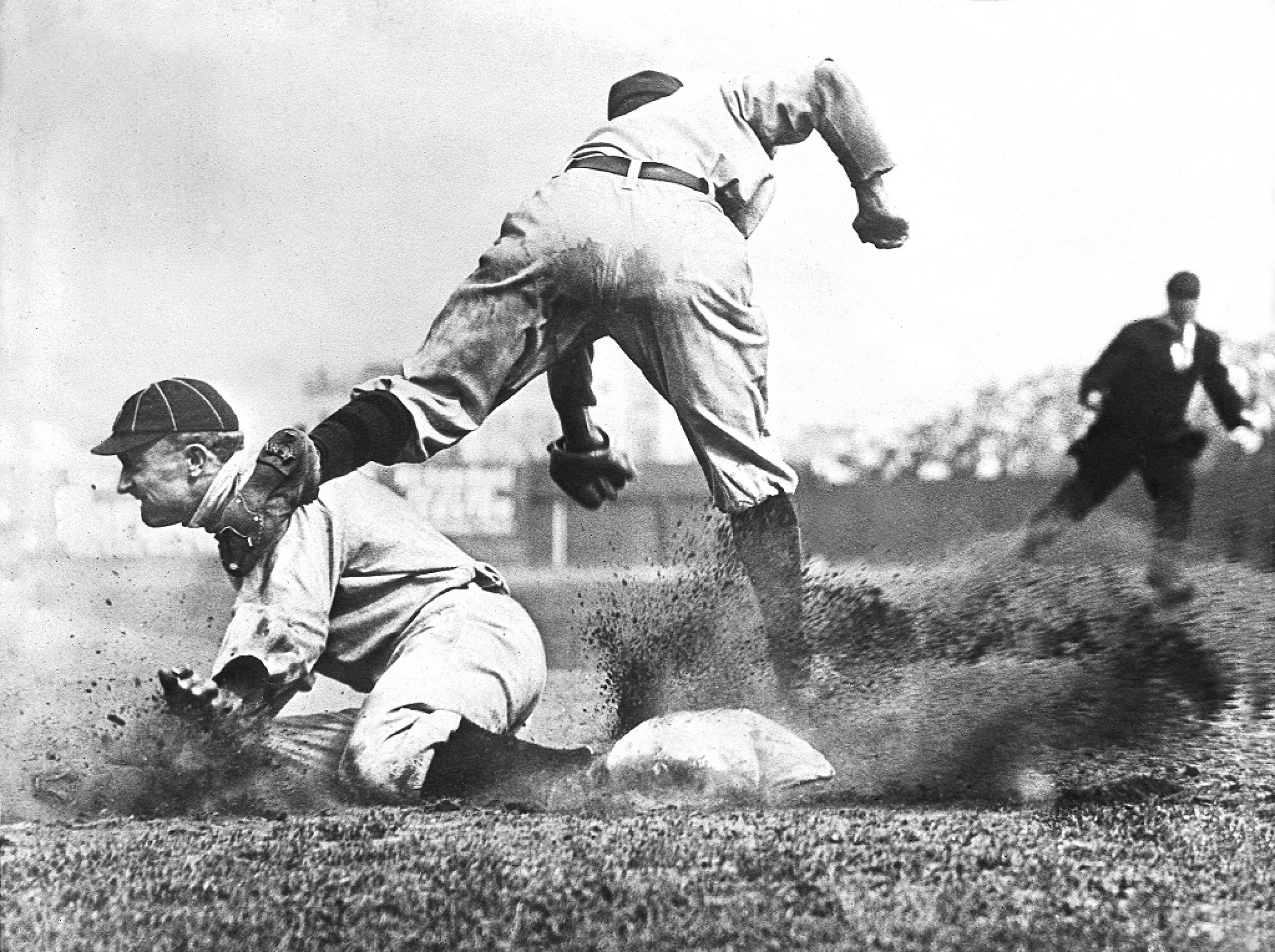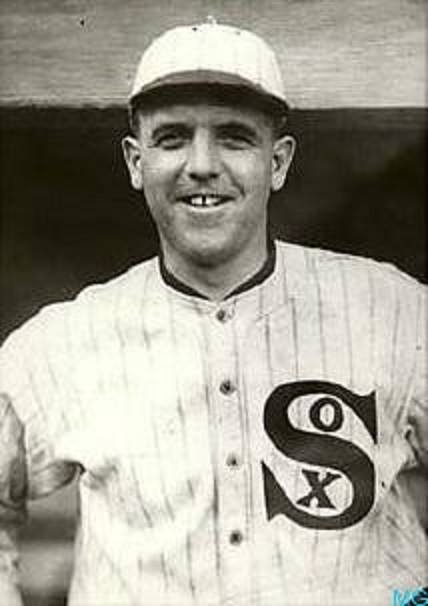Baseball History Comes Alive Now Ranked #2 by Feedspot Among All Internet Baseball History Websites and Blogs!
Guest Submissions from Our Readers Always Welcome!
THE BASEBALL HISTORY COMES ALIVE BLOG
Please note: As we compose new blog entries, we will now send each one out to all our subscribers as we post them. Here’s a link to see the entire Blog Archives -GL
September 27, 2022
Today I’ll continue my “deep dive” into the Black Sox scandal with a look at Eddie Cicotte’s performance in Game One. Keep in mind that the conventional wisdom tells us that Game One was “thrown” by the White Sox and Eddie Cicotte was the main culprit. Read this essay and see what you think. It’s a bit long, but if you’re interested in the Black Sox scandal, I think you’ll find it interesting.
This essay, along with all the others I’m posting in this series, is an edited version of the one that originally appeared in my 2019 book, Reflections on the 1919 Black Sox: Time To Take Another Look, available on Amazon.
New Blog Topic:
Eddie Cicotte’s Performance in Game One
“I did it for the wife and kiddies.” -Eddie Cicotte
Those of you following my recent posts about the 1919 World Series know that my only point has been that I have my doubts that the “conventional wisdom” is telling us the whole story. So I’ve been offering up some “food for thought,” uncovering oddities from the series that just don’t seem to add up, while trying to make sense of the whole sordid affair. My last post showed that many of the eye-witness accounts don’t seem to jive with the accepted version. Here’s another one along those same lines.
Take, for instance, Eddie Cicotte’s performance in Game One. After taking a good look at it, I’ve found it raises questions that don’t have easy answers, especially since the “conventional wisdom” tells us that the first two games were definitely thrown.
The Ace of the White Sox Staff
The Reds were the home team. The game was played on October 1, 1919, at Cincinnati’s Redland Field in front of 30,511 fans in 1:42. As the ace of the staff, Eddie was slated by manager Kid Gleason to pitch the opener. He was coming off a phenomenal year, going 29-7, with a 1.82 ERA, leading the league in wins, winning percentage (.806), and complete games (30).

The White Sox took a shellacking, losing 9-1, so it’s always been assumed that Eddie intentionally “threw” this game, or at least didn’t give it his best effort.
Eddie Hits the First Batter
It’s generally accepted that by hitting the first batter, Morrie Rauth, with the second pitch of the game, Eddie gave the signal that the fix was on. Of course, that raises an interesting question about the first pitch, a called strike fastball. What if Rauth had swung and hit it? What then? What would happen to the “signal”? We’ll set that question aside for the moment, as we address other issues.
Author Victor Luhr made an interesting point in his 1966 book The Great Baseball Mystery, suggesting Eddie played to win after that first batter, but added:
“He was in such bad mental shape as a result of his involvement in the scandal that he was hardly fit to pitch the opener.”
That statement fits nicely with Chick Gandil’s contentions in the 1956 interview with Sports Illustrated about the mental state of the players as the series opener approached. It also fits in nicely with the conclusion I’ve written in previous posts:
“In the days before the start of the 1919 World Series, the entire sordid episode became a blurred, surreal sequence of events where no one really knew what anyone else was doing or thinking. A few may have cracked under the intense mental stress, as Chick Gandil implied in his 1956 interview with Sports Illustrated.”
Was Eddie a Ringleader?
There’s no doubt that Eddie was heavily involved with the planning of the fix. Some say he, along with Chick Gandil, was a ringleader. It’s also pretty certain that Eddie pocketed a cool ten grand before the series started. He clearly had a motive: He was making half of what he was worth. But by the time the Series started, Eddie was deeply remorseful, possibly more so than any of the others, and was mentally anguished by his actions. He was the first to “come clean” in his tearful testimony before the grand jury that broke open the floodgates to the scandal.
Anyway, back to the first game…
The Reds pushed Rauth across and took an early 1-0 lead. The White Sox came back and tied the game in the second off Dutch Ruether. That’s how the game stood going into the fateful bottom of the fourth when the roof caved. But was it Eddie’s fault? Read on and decide for yourself…
The Fatal Fourth Inning
The inning started innocently enough with Edd Rousch flying out to Felsch in deep center. The next batter, Pat Duncan, then singled to right. One on, one out.
Now here’s where it got interesting: Eddie then made what was described as a “dazzling” defensive play, fielding a hot shot off the bat of Larry Kopf, not what you’d expect to hear if Eddie was intentionally throwing the game. Eddie made an accurate throw to shortstop Swede Risberg to force Duncan at second. But Risberg’s relay to Gandil was late by an eyelash, costing Eddie an inning-ending double play. Two outs, man on first.
Eddie again appeared to have the third out when the next batter, Greasy Neale, hit a lazy pop fly to short left. Risberg went back on the ball, had it in his glove, but failed to hold on. As Victor Luhrs described the play:
No error was charged, but Eddie really had gotten his man. Given the extra outs, the Reds took advantage and went on to rout the White Sox, scoring five runs after two outs, and Eddie was out of the game. In sportswriter I.E. Sanborn’s Chicago Tribune account, “the Reds’ rally hung on the toenail of Kopf beating Risberg’s throw to first.”[emphasis added]
Too bad there weren’t replays and appeals back then!
Was it Eddie’s Fault?
Can this disastrous inning really be blamed on Eddie Cicotte? The White Sox defense gave the Reds two extra outs; and, as a great team should, they took advantage of it. Eddie should have been out of the inning with no runs and the game tied at one. Who knows what the outcome would have been if either of these plays had been made? Would we even be talking about this Series today? Incidentally, had an error been charged, those five runs would all have been unearned, and Eddie’s performance would have looked a lot better.
This fits my theme that there’s more to the Series than meets the eye. The more I delve into the details, the more inconsistencies with the conventional wisdom I discover. Here’s one of my favorites, as quoted by Umpire Ernie Quigley. He cited two great plays by Edd Roush and Morrie Rauth:
“But for these two plays, the White Sox would have won at least two more games, which would have meant the Series for them.”
That’s the first-hand observation of a baseball lifer who was actually on the field. It’s hard to jive the conventional wisdom with a statement like that.
A remorseful Eddie Cicotte always claimed he was trying to win after the first batter:
“I pitched my best afterwards. I didn’t care what happened. They could have had my heart and soul if I could have gotten out of the deal. I lost because I was hit, not because I was throwing the game.”
Even “Clean Sox” catcher Ray Schalk said, “Eddie gave his best all the way.” I must repeat: All this is not to excuse Eddie Cicotte or the Black Sox. Conspiring with gamblers to throw the World Series was a serious offense. They got what they deserved and they knew it. The acceptance of dirty money irreversibly tarnished their reputations and made their future protestations of innocence ring hollow.
It’s just that we’re trying to uncover the truth in the details…
Gary Livacari
Photo Credits: All from Google search
Information: Excerpts sourced from Burying the Black Sox, by Gene Carney
As always, we enjoy reading your comments
Here’s a link to see the entire Blog Archives


Outstanding, Gary. I so appreciate your determined effort to 1) avoid making (tempting and convenient) hair-trigger judgments, then 2) get to the bottom of this distressing but mystifying chapter in baseball history by relying on verifiable facts much more than any version of public opinion, or what you’re rightly calling “conventional wisdom.”
Your conclusions that there’s a lot more to the 1919 Series than meets the eye, but that conspiring with known gamblers begets the punishment that was meted out, are also “on the money,” if you’ll pardon the reference. At any rate I’m betting on you, Gary!
High regards,
Michael
Thanks Michael…greatly appreciateld. I became friends with Gene Carney in the months before he passed away. We even went to a Cubs game together when he was here visiting the Chicago Historical Society doing research. Gene told me he interviewed Elliot Asinof before Asinof died and got him to admit that he actually made up a lot of what was treated as factual in Eight Men Out. When Gene confronted him that there were no footnotes or sources cited in the book, Asinof even admitted that some of the characters in the book were the product of, in his words, “an amalgam of many stories.” Not exactly a ringing endorsement for the book that everyone takes as the “definitive” word on the scandal. We’re left wondering which stories were made up and which were real. When I heard all that from Gene, I started trying to form my own opinion, using many of the first-hand accounts that Gene cited in his book. I found that the conventional wisdom doesn’t exactly jive with the accounts of those who were actually there.
The big misconception about the 1919 World Series is that the White Sox were the better team and beaten, incomprehensibly, by the underdog Cincinnati Reds. In fact, the Reds had much better and deeper pitching. They started five top-flight pitchers, while the White Sox had only Cicotte and Williams, with grizzled rookie Dickey Kerr as a stop-gap third pitcher in the rotation. The “clean” White Sox – both Collins, Schalk, Leibold – did not hit at all in the series. The two top Sox hitters were accused conspirators. Clearly, there was a fix initiated by the White Sox players and it probably included two different gambler syndicates, to maximize the players’ share. However, it appears the Reds could have beaten the White Sox without benefit of a fix. One last point – often overlooked. The 1916 – 1920 White Sox came within about three games of winning four pennants. This was a great team, the “lost dynasty”.
Thanks Rod, you’ve raised some great points all of which I’ve tried to cover in this series on the Black Sox scandal. Check out some of my other essays.